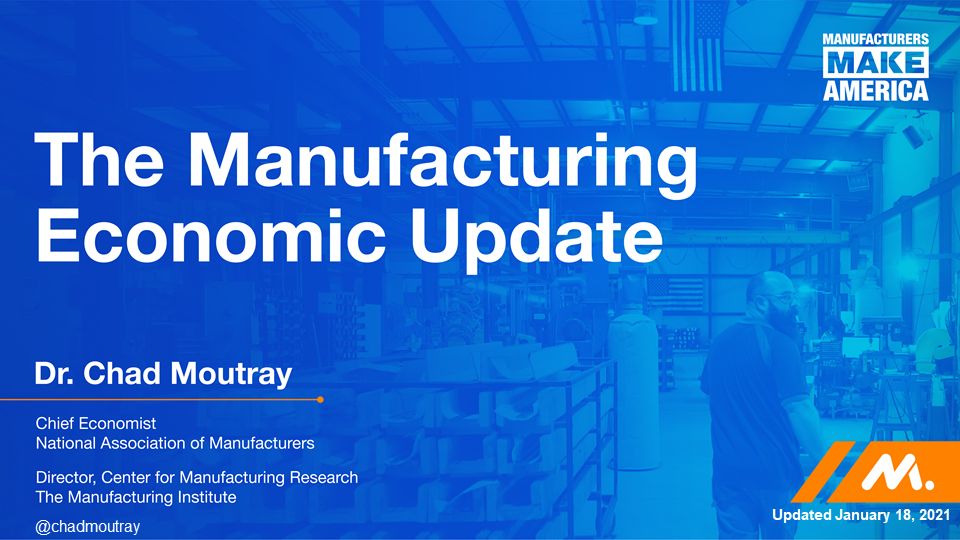This website uses cookies so that we can provide you with the best user experience possible. Cookie information is stored in your browser and performs functions such as recognising you when you return to our website and helping our team to understand which sections of the website you find most interesting and useful.
News
Manufacturing an Economic Bright Spot Amidst Pandemic
As part of the Vinyl Institute’s (VI) Vinyl360 Pulse webinar series, we invited Chad Moutray, Chief Economist for the National Association of Manufacturers (NAM), to join us. Moutray provided us a 2021 economic outlook for manufacturing – and it was optimistic.
If you can remember, the 2020 economic outlook actually began hopeful, with the global economy starting to pick up, the U.S. unemployment rate at 3.5% – it’s lowest since 1969 – and U.S. gross domestic product (GDP) steadily trending upwards for the last decade.
But that quickly changed by mid-March. Virtually every industry sector was negatively impacted. GDP dropped by more than 30% in the second quarter. And the low unemployment rate shot up to nearly 15%. The recession we entered, thanks to the pandemic, is the worst the U.S. has seen since the Great Depression of the 1930s.
But despite it all, Moutray noted that manufacturing has been making a quick comeback. Make no mistake that manufacturing was negatively affected, but since the initial hit the industry took in March and April, it’s been quickly regaining positive momentum.
The recession will make a checkmark recovery.
Different economists have various predictions of what the economic recovery will look like, but Moutray has long predicted a checkmark, and this is becoming clearer and clearer for the manufacturing industry.
For one thing, the industry has seen eight straight months of growth. And in the fourth quarter of 2020, both employment and capital spending were picking up – an encouraging sign that manufacturers were once again investing in their businesses. Nearly 30% of NAM members have reported they have returned to pre-recession output levels, and the majority expect to be back by the second half of this year.
And when you consider how industries like service and hospitality were hit, manufacturing’s outlook ended up being rather positive. The chemical industry saw only a 1.3% decline in production and plastics saw only a 0.8% decline when compared to 2019 levels.
As has been the case for years, attracting and retaining a quality workforce remains the number one issue for manufacturing, and this is an area where the industry is still seeing the pandemic’s effects. Although manufacturing employment has been increasing for eight months, it still sits 557,000 employees less than it did pre-recession. We will have to work even harder to combat this skills gap.
To watch Moutray’s full economic outlook, click here.


